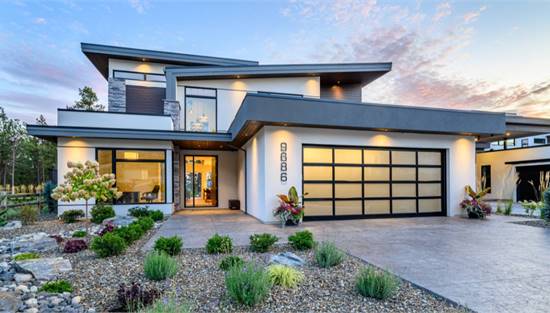The Artistry of House Design: Weaving Architecture into Living Spaces

In the realm of aesthetics and innovation, the term house design stands as a testament to the fusion of creativity, functionality, and the spirit of architecture. This discourse delves into the intricate world of house design, unveiling the profound impact of architecture on the creation of living environments that embody beauty, purpose, and harmonious living.
House Design: A Symphony of Architectural Expression
House design transcends the mere arrangement of walls and windows—it’s a symphony of architectural expression that shapes the canvas of human habitation. Architects become storytellers, weaving narratives through structural elements, spatial configurations, and material choices. This fusion of creativity and technique results in dwellings that resonate with the aspirations and lifestyles of their inhabitants.
The Architectural Imprint: Creating Space and Form
At the heart of house design lies architecture—a discipline that goes beyond the visual aesthetics. Architects are master sculptors of space and form, crafting dwellings that engage the senses and evoke emotional connections. Each element, from the curvature of an arch to the linearity of a staircase, carries the architectural imprint that defines the character of a dwelling.
The Dance of Functionality: Form Follows Purpose
In the symphony of house design, functionality and aesthetics perform a delicate dance. Architects understand that form follows purpose—a principle that ensures spaces are not only visually pleasing but also serve the needs of their occupants. This dance involves spatial planning that optimizes flow, circulation, and the practicality of daily living.
Architectural Narratives: Crafting Identity
Dwellings become architectural narratives that reflect the identity of both the occupants and the surrounding environment. Every architectural decision carries meaning, whether it’s the choice of materials that resonate with local culture or the design that responds to climatic conditions. This narrative becomes a living testament to the intertwining of architecture and human experience.
Innovative Blueprinting: Orchestrating Concepts
House design commences with innovative blueprinting—a process that involves conceptualizing ideas and orchestrating them into coherent designs. Architects are akin to conductors, harmonizing elements like light, space, and materials to create compositions that resonate with both functionality and visual allure.
Spatial Dynamics: Transforming Perception
Architects manipulate spatial dynamics, transforming the way occupants perceive and interact with their surroundings. Through strategic placements of windows, spatial divisions, and the manipulation of scale, architects shape environments that captivate the eye, evoke emotions, and foster a sense of belonging.
The Language of Materials: Materials as Expression
Materials become the language of architectural expression. From the warmth of wood to the sleekness of glass, each material choice carries its own narrative and texture. Architects wield these materials as tools to communicate their vision, fostering tactile and visual experiences that engage occupants on a sensory level.
Architectural Details: The Essence of Craftsmanship
Architectural details elevate house design into the realm of craftsmanship. Ornamental elements, such as intricate moldings, sculptural reliefs, and decorative motifs, inject personality into spaces. These details are the brushstrokes of architecture, creating unique stories within the larger narrative of the dwelling.
Innovative Technologies: Building the Future
House design embraces innovative technologies as the building blocks of the future. Architects integrate smart home systems, sustainable materials, and energy-efficient solutions to create dwellings that align with contemporary aspirations. This fusion of technology and architecture fosters environments that stand at the forefront of modern living.
Cultural Integration: The Architecture of Identity
Architecture celebrates cultural integration—a process where designs embrace local traditions, aesthetics, and heritage. Architects infuse vernacular elements into modern structures, creating a sense of continuity and identity. This integration pays homage to the roots while envisioning the future.
Ecological Responsiveness: Architecture in Harmony
In the era of environmental consciousness, house design becomes an advocate for ecological responsiveness. Architects incorporate passive design principles, green technologies, and sustainable materials to create dwellings that harmonize with the environment and reduce ecological footprints.
Architectural Ethos: Formulating Ideals
Every architect carries an architectural ethos—an ideology that informs their designs and guides their decisions. Whether it’s a commitment to minimalism, a celebration of historical revival, or an embrace of futuristic concepts, this ethos shapes the narrative of their creations and resonates with the essence of house design.
Occupant Experience: Architecture and Emotion
Ultimately, house design is about creating spaces that resonate with emotion and experience. Architecture becomes a vessel for memories, aspirations, and human interaction. The design of a space influences moods, fosters connections, and shapes the stories that unfold within its walls.
In Conclusion: Architecture’s Legacy
In conclusion, house design is the canvas on which architecture paints its legacy. The intricate interplay of architectural elements, design philosophies, and human aspirations transforms living environments into sanctuaries of beauty, functionality, and identity. This fusion embodies the marriage of artistic expression and practicality—a narrative that underscores the profound impact of architecture on the way we live, connect, and experience the world around us.